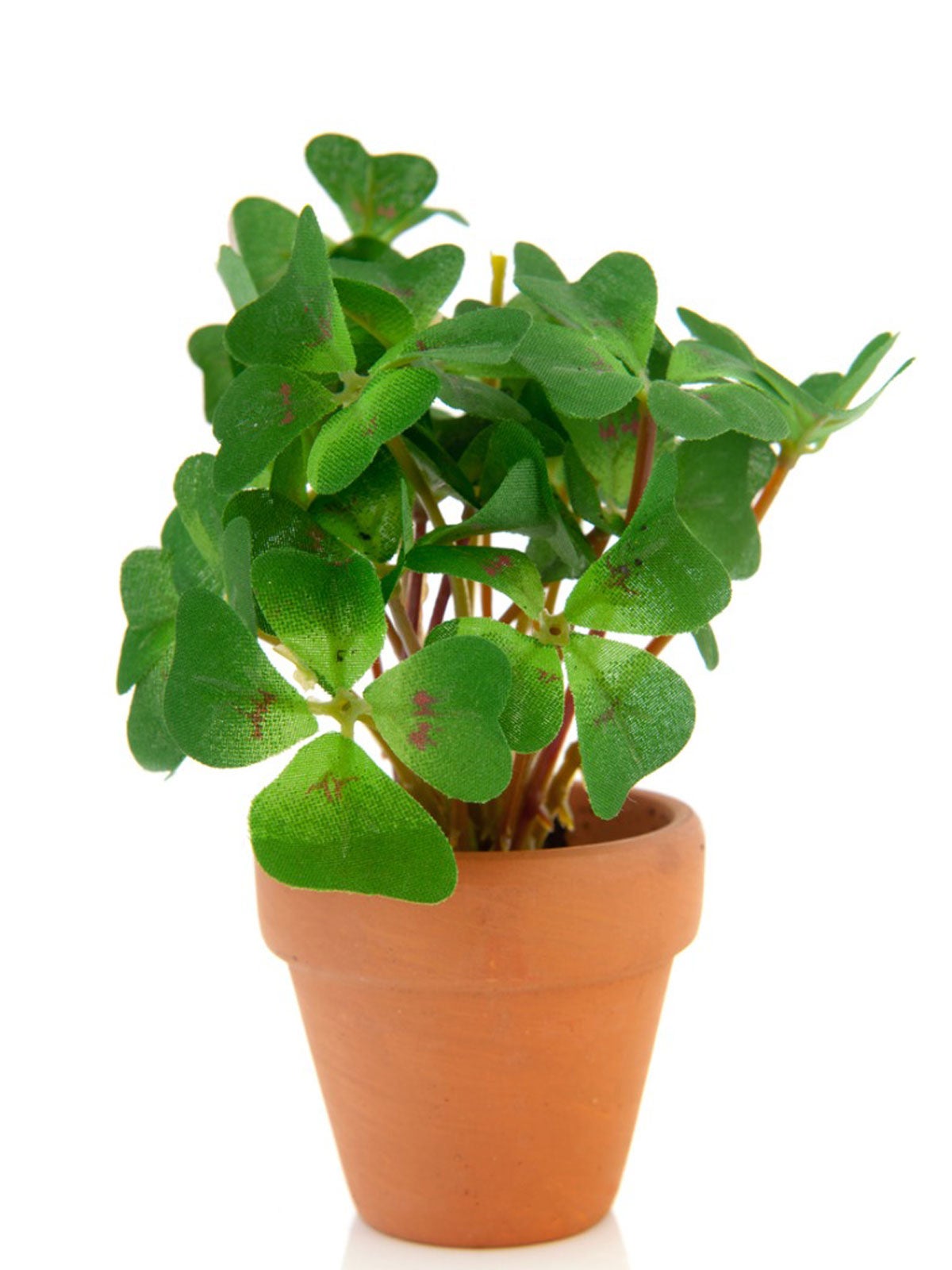Growing Shamrocks: Fun Ways To Grow Clover With Kids


Creating a shamrock garden with your kids is a great way to celebrate St. Patrick's Day. Growing shamrocks together also gives parents a sneaky way to incorporate learning into a rainy day project. Of course, anytime you share your love of gardening with your child, you're strengthening the parent-child bond.
How to Grow Clover with Kids
If you're looking for fun ways to grow clover with children, consider these easy projects and the educational lessons you can include:
Planting Clover in the Lawn
White clover (Trifolium repens) is a great addition for a self-fertilizing lawn. Prior to the 1950's, clover was part of lawn seed mix. Clover requires less water, grows well in the shade and bees benefit from the pollen produced by the flowers. (Of course, you might want to avoid planting clover around the kid's play area to avoid bee stings.)
So grab some clover seed and let your kids have a ball throwing handfuls around the yard. The lesson they'll take away is that chemicals aren't necessary to grow a healthy, green lawn.
Planting Clover in Pots
Making an indoor shamrock garden is one of the fun ways to grow clover while teaching your children about the history of Saint Patrick. Decorate dollar store pots with paint, craft foam, or decoupage, fill with soil and lightly sprinkle on a spoonful of clover seed. Water before covering with plastic wrap. Keep the pot in a warm location.
Germination takes about a week. Once the seeds have sprouted, remove the plastic and keep the soil moist. As the clover seedlings unfurl their three-sectioned leaves, discuss how St. Patrick believed the leaves of white clover represented the holy trinity.
Pot of Gold Reading Tie-In
Check your local library for books about the pot of gold legend, then craft your own pots of gold. You'll need black plastic cauldrons (available online or at dollar stores), small stones, gold paint, and Oxalis (wood sorrel) plants or bulbs. These are often sold as “shamrock” plants around St. Patrick's Day.
Sign up for the Gardening Know How newsletter today and receive a free copy of our e-book "How to Grow Delicious Tomatoes".
Help your kids paint the small stones with the gold paint, then transplant the shamrock plants into the caldrons. Place the “gold” stones on top of the soil. For an added touch, use thick craft foam to make a rainbow. Glue the rainbow onto Popsicle sticks and insert it into the pot of gold.
Fostering a love of reading and incorporating the science of rainbows while growing shamrocks makes this activity the trifecta of craft projects for classrooms and at home.
Shamrock Fairy Garden
Choose a selection of clover or Oxalis varieties and turn a corner of the flowerbed into a leprechaun fairy garden. Use spray paint to create “gold” rocks. Add a leprechaun statue, fairy house, or signs with your favorite Irish sayings.
Use the garden to teach your children about Irish heritage or simply enjoy the pollinators that visit the beautiful flowers.
Fresh and Dried Leaf Crafts
Get the kids off the video games and outdoors with a clover scavenger hunt. Use the leaves for printing a St. Patrick's Day t-shirt or tote bag. Or dry the leaves between sheets of wax paper and use them to make artwork, like laminated placemats.
Add the challenge of searching for a four-leaf clover and make the game a life lesson about luck vs. hard work.

Laura Miller has been gardening all her life. Holding a degree in Biology, Nutrition, and Agriculture, Laura's area of expertise is vegetables, herbs, and all things edible. She lives in Ohio.